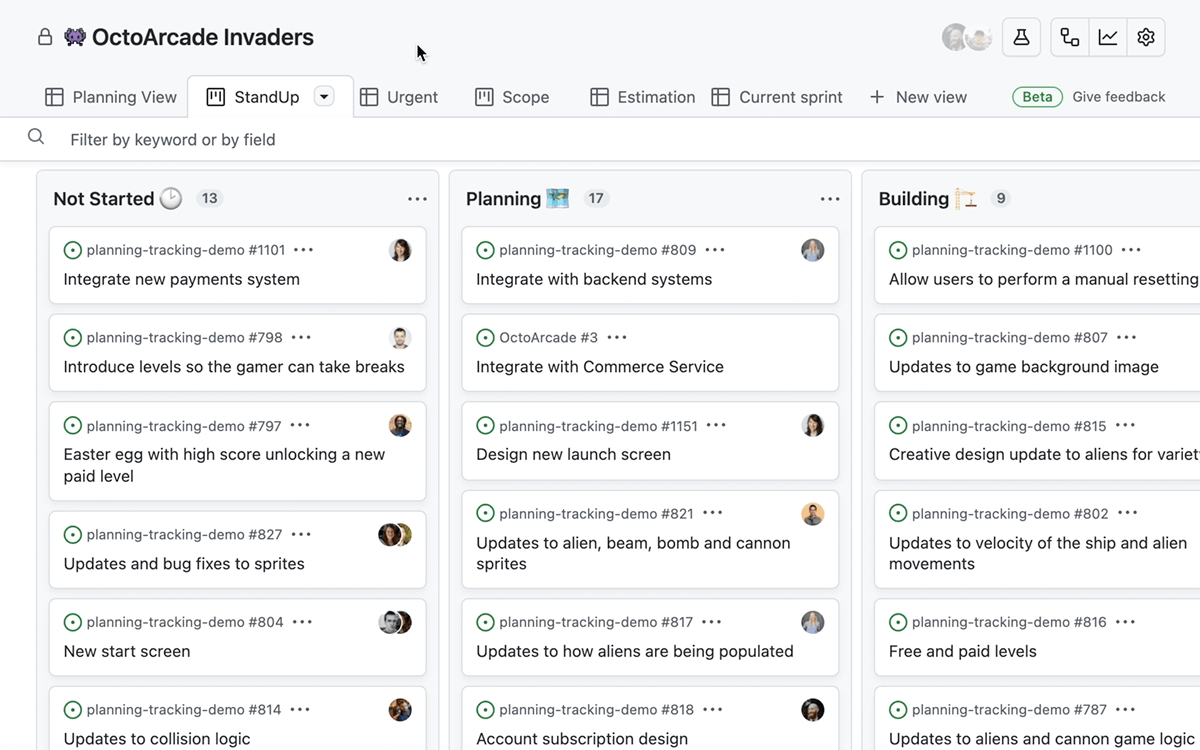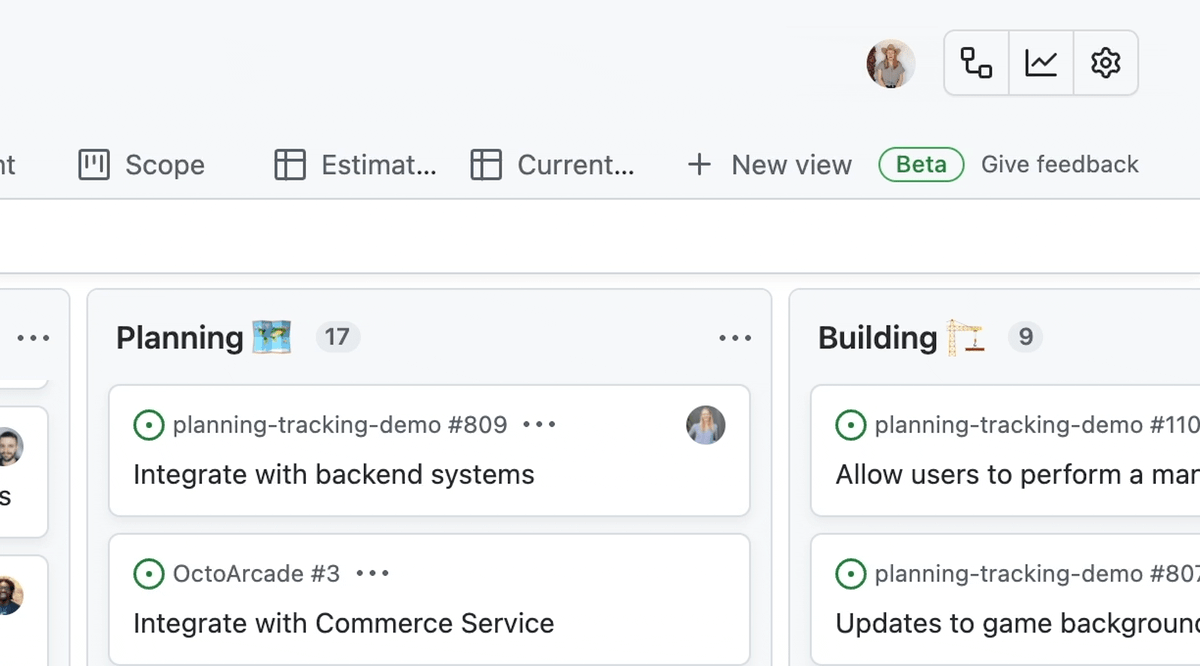The new GitHub Issues – December 2nd update
We’re consistently expanding the capabilities of projects (boards & tables) on GitHub, and we’ve got a handful of exciting updates and improvements launching today.
💫 View your boards by any field
When you are in the board layout, you can now pick any single select or iteration field to use for columns.
- Open the view settings menu and select
column field. - Choose any of the available single select or iteration type fields.
- Drag and drop your items to update your selected field.

✅ Set fields to items added under a filter
No more disappearing items. When you add an item to a view with a filter, those fields will now automatically be set.

👋 See your team
With our new presence indicators we continue to evolve the real-time experience in projects, you can see who on your team is making updates to the same projects you are. Presence indicators are currently only enabled for organization owned private projects.

✨ Bug fixes & improvements
Other changes include:
- Clicking into the filter bar will now automatically add a space.
- Bug fix where previous iterations would not display in the board layout.
- Fixed an overflow issue with long view names.
- Added the ability to filter by type, to switch between users or teams under the
manage accesssettings page.
See how to use GitHub for project planning with GitHub Issues, check out what’s on the roadmap, and learn more in the docs.
